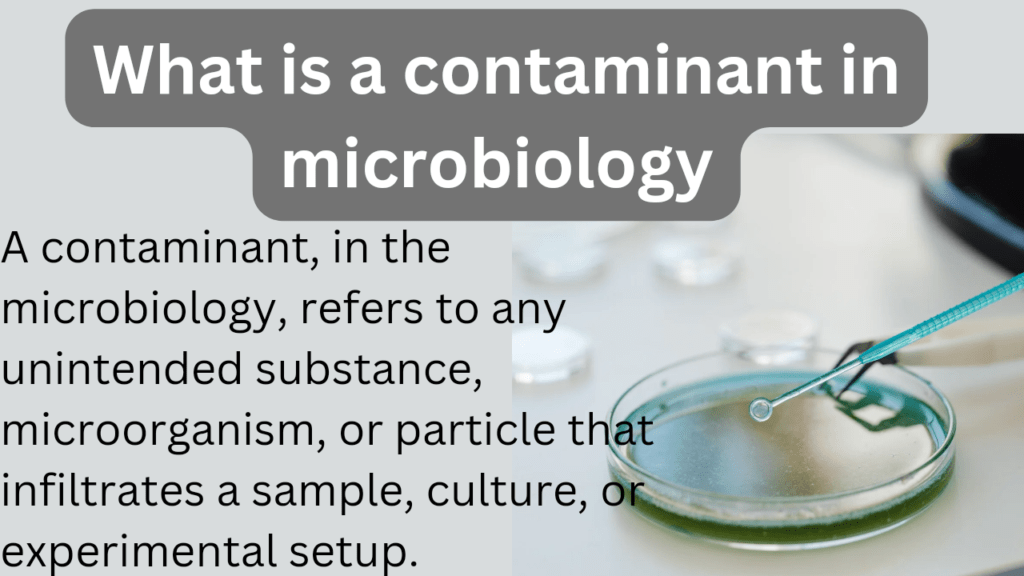In the world of microbiology, the pursuit of knowledge about the smallest organisms on Earth is a journey fraught with precision and attention to detail.

Microbiologists dedicate their careers to understanding bacteria, viruses, and other microorganisms that often escape the naked eye.
These unwanted contaminants disrupt experiments, compromise results, and lead to misinterpretation of data.
Here you will learn about what is contaminants in microbiology, and their sources.
What is a Contaminant in Microbiology?
A contaminant, in the microbiology, refers to any unintended substance, microorganism, or particle that infiltrates a sample, culture, or experimental setup.
Contaminants can originate from a multitude of sources, including the laboratory environment, equipment, human handling, or even the air.
The Implications of Contaminants
Contaminants pose significant challenges in microbiological research for several reasons:
- Altering Experimental Results: Contaminants can introduce foreign microorganisms or substances into a culture or experiment. This can lead to skewed or entirely incorrect results, making it difficult to draw meaningful conclusions.
- Confounding Research: Contaminants may mimic the behavior of the target microorganisms, creating confusion and uncertainty in research. This can hinder the ability to identify and study the actual microorganisms of interest.
- Compromising Purity: In microbiology, maintaining the purity of cultures and samples is paramount. Contaminants can compromise this purity, rendering cultures unusable for specific experiments or applications.
- Jeopardizing Reproducibility: Reproducibility is a cornerstone of scientific research. Contaminated samples or cultures can make it exceedingly difficult to replicate experiments accurately, undermining the reliability of research findings.
Sources of Contaminants
Contaminants can emerge from various sources, some of which include:
- Laboratory Environment: The laboratory itself can be a source of contaminants. Airborne particles, dust, and microorganisms can infiltrate experiments if proper precautions are not taken.
- Laboratory Equipment: Equipment that is not adequately cleaned or sterilized can transfer contaminants to samples or cultures. This includes pipettes, petri dishes, and incubators.
- Human Handling: Human contact can introduce contaminants. Researchers must take care to wash hands, wear appropriate personal protective equipment, and follow sterile techniques.
- Reagents and Media: Even the materials used in experiments, such as culture media and reagents, can contain contaminants if not properly stored or prepared.
Mitigating Contaminants in the microbiology
To mitigate the impact of contaminants in microbiology, scientists employ a series of rigorous practices:
- Sterilization: Equipment, materials, and surfaces are sterilized to eliminate potential contaminants. Autoclaves, UV irradiation, and chemical disinfection are common methods.
- Aseptic Technique: Researchers use aseptic techniques to minimize the introduction of contaminants during experiments. This includes working in laminar flow hoods and wearing sterile gloves.
- Environmental Control: Laboratories may be equipped with air filtration systems and controlled environments to minimize airborne contaminants.
- Regular Maintenance: Equipment must be regularly maintained and cleaned to prevent the buildup of contaminants.
2 thoughts on “What is a contaminant in microbiology”